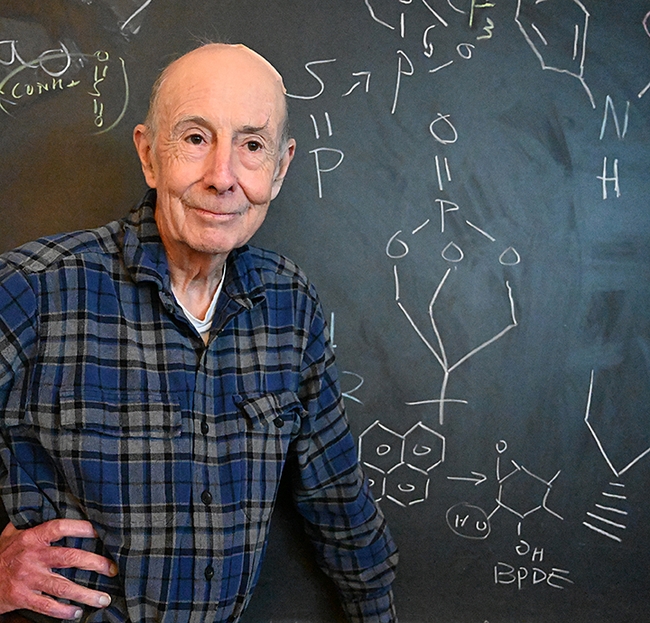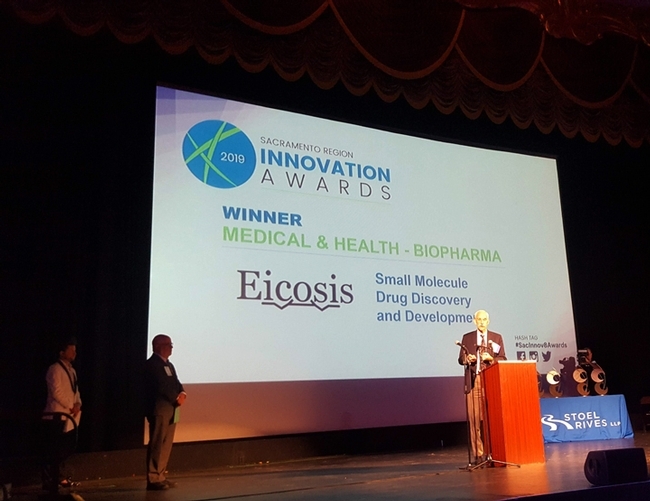
Posts Tagged: inflammation
Good News All Around
Congratulations to UC Davis doctoral alumna and researcher Cindy McReynolds and UC Davis distinguished professor of entomology Bruce Hammock. You may have heard of Professor Hammock's earlier research on insect developmental biology and green pesticides, but he has long turned his...

UC Davis distinguished professor Bruce Hammock, chief scientific officer and chairman of the board of EicOsis Human Health LLC. (Photo by Kathy Keatley Garvey)

This was the scene at the Sacramento Region Innovation Awards program when EicOsis was named winner of the medical and health/biopharmaceutical category. Pictured is William Schmidt, Ph.D., of EicOsis. (Photo courtesy of Robb Wright)
Study reinforces link between obesity, high-fat meals and heart disease

Eating a high-fat, fast food breakfast typical of many Americans - two breakfast sandwiches, hash browns and orange juice - doesn't have an identical effect on each individual.
The food's effect varies depending on factors like waist size and triglyceride levels, suggests new research at UC Davis.
The research reinforces the link between belly fat, inflammation and thickening of the arterial linings that can lead to heart disease and strokes.
“The new study shows that eating a common fast food meal can affect inflammatory responses in the blood vessels," said Anthony Passerini, assistant professor of biomedical engineering at UC Davis, who led the project.
Passerini and his collaborator, UC Davis professor of biomedical engineering Scott Simon, recruited 61 volunteers with high and normal fasting triglyceride levels and a range of waist sizes. They measured the volunteers' levels of triglyceride particles in their blood after they ate the typical high-fat breakfast from a major fast food franchise.
Passerini's team found that after eating, the size of a type of a particle called triglyceride-rich lipoprotein (TGRL) varied directly with the individual’s waist size and preexisting blood triglyceride level. These particles can bind to the endothelium, triggering inflammation and an immune response that brings white blood cells to repair the damage. Over time, this leads to atherosclerosis.
Individuals with both a waist size over 32 inches (not terribly large by most standards) and high triglyceride levels had large lipoprotein particles that bound easily to the endothelial cells and caused inflammation in response to an immune chemical “trigger.”
Click here to read more.